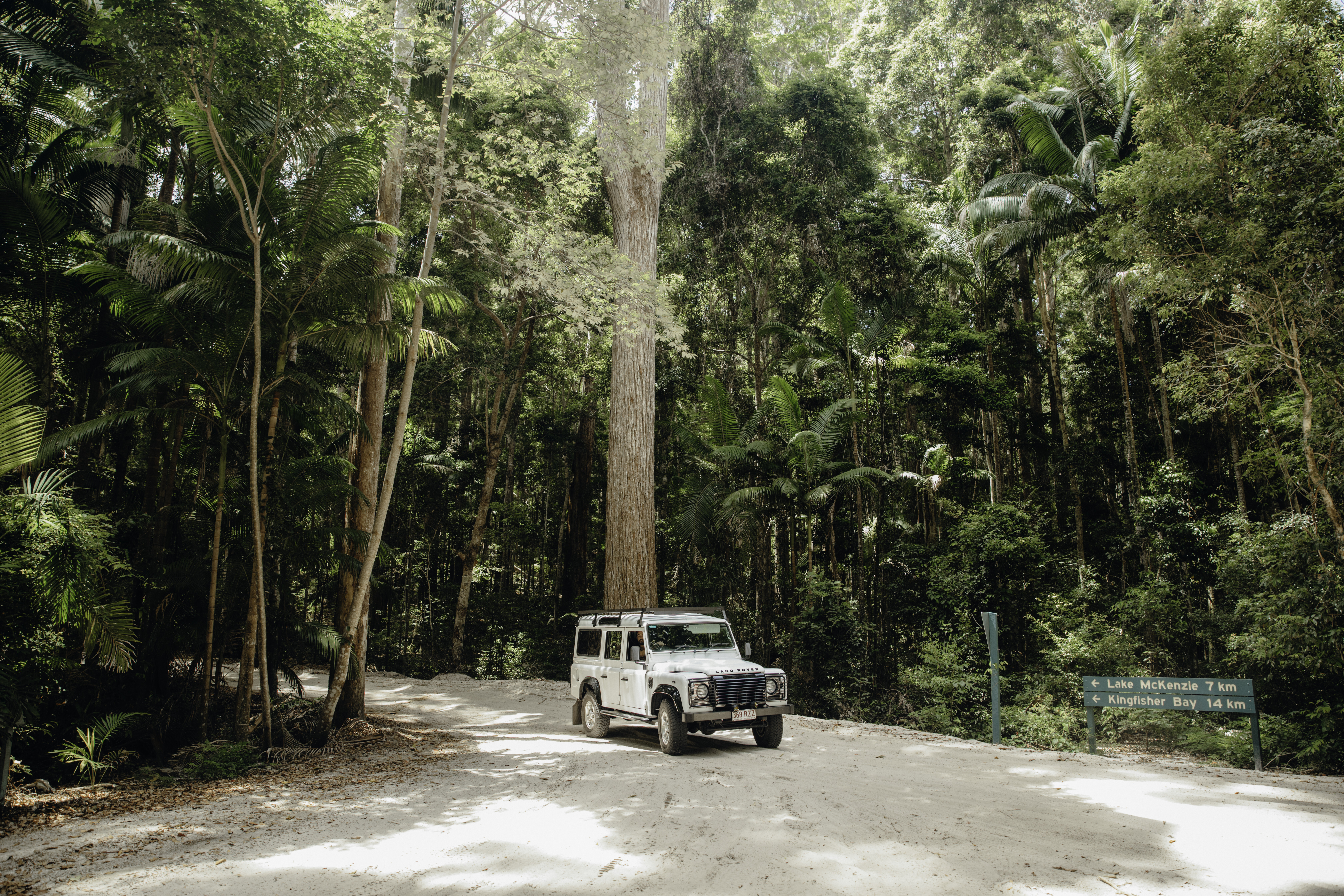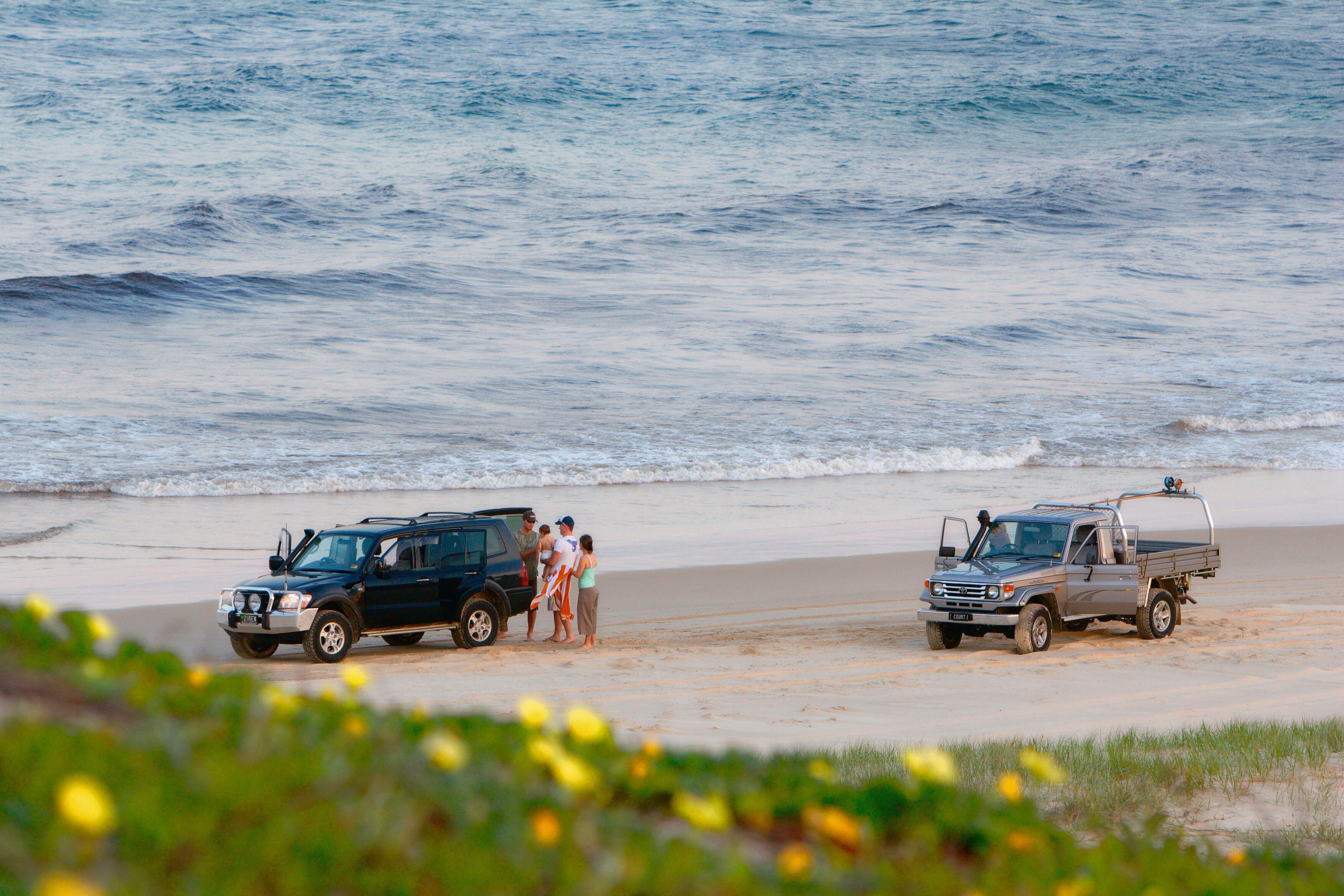Advertisement
Advertisement
When you think about fanging it on a beach in a 4WD, you imagine the sunshine, the spray of sand and the laughs and joyful screams echoing out of your vehicle. What you may brush over is how difficult it actually is to drive across a beach and up and down the sand hills. Whether you’re a beginner (or even an experienced driver) these quick tips will no doubt come in handy for your summer sand adventures.
Avoiding getting bogged should be one of your highest priorities when four-wheel driving. Letting some air out of your tyres is one way to assist this. Deflated tyres will be able to travel a little more smoothly across the sand as the sidewalls bulge out and the surface area touching the ground increases. As the weight of your 4WD is now spread across a bigger area, you end up with less weight per square cm.
The accepted normal tyre pressures on sand are 16 to 18psi. However, this can be altered by around 20 per cent depending on how heavily (or lightly) your vehicle is laden.

Four-wheel driving on a sand dune burns a lot more fuel than you’re used to, so don’t make the mistake of not fuelling up before you head off. This happens because sand slip ratios are around 15 to 40 per cent. This means the tyre rotates 15 to 40 per cent more than it would if the car travelled forwards precisely the circumference of the tyre (if the car was travelling on a standard track).
The other reason you’ll end up using more fuel is due to the increased rolling resistance of the deflated tyres and tyres sinking into the sand. Rolling resistance in sand increases with speed to a certain point, then it decreases. This is because the tyre has to move sand out of the way, which is easier at slow speeds. At high speeds, the tyre can actually surf on top of the sand. Regardless of why, make sure you’re prepared to avoid seeing that unfriendly visitor light up on your dash telling you fuel is low.
Although four-wheel driving is a year-round love for most of us, if possible, avoid hitting the beach dunes post-storm or during cold temperatures. When tides break on the beach during storms it softens the sand. This transforms into quicksand (something you don’t want to drive through in your vehicle!) During summer, or warmer temperatures, the beach has more time to settle and compact after being hit with rain or tides, making the sand firmer and easier to travel across.

It’s a great idea to wear sunglasses, especially for the white sand dunes. This will protect your eyes from dune glare and provide better forward vision. Due to the fact that there are no trees on dunes, there are very few shadows, so it can be difficult to see holes or depressions in the sand before you hit them. Sunglasses can improve your chances of missing big and little lumps and bumps in the dunes.
We talk a lot about vehicle gear here, and for good reason. Nine out of ten times, when you go four-wheel driving you’re going to get bogged, despite your best efforts. This is because wet sand and dry sand look very similar. Even the most experienced drivers can find themselves endlessly revving in the quicksand-like terrain. Your best bet is to carry an array of emergency gear to be able to get unstuck on your own, rather than waiting for someone to come along and help you out.
First things first, grab a shovel and MaxTrax recovery tracks. Most of the time, digging some sand out and laying your recovery tracks down will allow you to drive yourself out without too much fuss. Additionally, pack some safety gloves to avoid injuring yourself whilst you attempt to self-rescue. You’ll also need a portable air compressor for reducing and increasing your tyre pressures as needed. Finally, a sand flag is a helpful (and cheap) safety tool.
As we’ve mentioned, getting bogged happens to the best of us. Sometimes it’s all part of the fun of getting off-track and spraying some sand around. So don’t beat yourself up if you find yourself in this situation, just self-recover and get on with it. Apart from the above tips, consider going four-wheel driving in a group as there’s always safety in number. Plus the day is more fun when shared with mates!